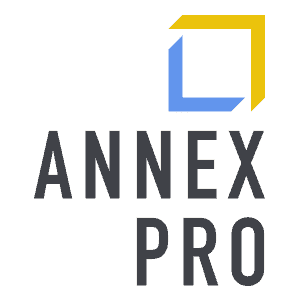BLOG
Cloud-based Media Content Creation for Dummies

By Kerry Corlett – CEO & Founder, Annex Pro
Today’s blog post is little different. Rather than geek out about the latest technical announcement (which seems to happen daily in the Media and Entertainment industry!) I wanted to look at things more from a business perspective. And if you haven’t started moving to the cloud, or are early in your cloud journey, this article is especially for you.
Cloud solutions are dominating our IT infrastructure discussions with customers these days. While it has long been the trajectory, cloud adoption has recently undergone an undeniable inflection point. For those involved in creating animation, VFX, games, post-production, broadcast and education, who have yet to start their cloud journey, the question is no longer ‘if’ but ‘when’ to make the move.
Considering the transformational potential that the promised land of utility compute offers, this is hardly a surprise. For a business to have on-demand access to the precise amount of horsepower they need for a specific project and then release it, presents a material value. No waste, no fixed overheads, no lengthy planning cycles. In terms of the bottom line, cloud is an obvious solution.
We’ve Seen This All Before
There’s a good reason why this story sounds familiar. What we’re witnessing is another example of the democratization of technology (and to an extent, the entire Media and Entertainment industry, particularly media content creation). This is this the process through which a technology enters the market and then rapidly becomes ubiquitous. Whether we’re looking at electricity, the internet, or smart phones – there is a recognisable pattern, the characteristics of which can be seen in the cloud market today.
When a technology becomes default, it is seldom because of the technology itself. I would argue that the meteoric rise of smart phones, was less a result of advancements in handsets or specific chips, but more attributable to the shift in habits, working patterns and ultimately, expectations. The smart phone conceived the idea of being ‘always-on’ – connectivity on the move and an expectation for instant gratification.
So, if history is repeating itself, what can we expect from the democratization of cloud? I believe it comes down very simply to a shift from ‘fixed’ to ‘flexible’.
Media & Entertainment’s Perfect Storm
There are some seismic events occurring in the Media & Entertainment industry, which can loosely be categorised in to 3 areas:
- Increasing amounts of data being created and needing to be stored
- A transition from CAPEX to OPEX business models
- The intensifying of the ‘Streaming Wars’
Back in the ‘Golden Age’ era of Hollywood, most film productions would consist of a 10:1 ratio of raw footage to final cut. Alfred Hitchcock took that standard ratio even lower, famously shooting most of his films 3:1. By today’s standards, these ratios would be inconceivable. The 2015 remake, ‘Mad Max: Fury Road’, shot 480 hours of raw footage for what became a 120 minute final cut – a ratio of 240:1. Compound this increase with higher resolution formats and accelerating frame rates and you have an unprecedented volume of data being generated for each production.
Throughout a production schedule, there are key peaks and troughs. These means that the demand on various parts of the studio pipeline are inconsistent. To respond to the fluctuating rhythm of production requirements, we’re seeing more studios shifting their business models and accounting practices from CAPEX (capital expenditures) to OPEX (operating expenditures), or at least, a hybrid of the two.
Why does this matter? CAPEX costs typically are longer term commitments of significant dollars, amortized over many years and importantly, over multiple projects. For example, IT infrastructure (workstations, storage, render farms) were historically a capital expense for studios. As anyone in charge of making investments in this area, many hours and lost sleep is spent deciding how, where and how much to spend on these large, long–term commitments.
An operating expense (OPEX) on the other hand is typically a lower cost attached to completing a certain project. The commitment is usually also for a shorter term (flexible) and can more easily be attributed to individual projects.
This shift to more OPEX can reduce or potentially eliminate long-term (fixed) financial commitments and means that a studio can remain financially dynamic in an ultracompetitive environment.
This level of competition only intensified by the number of streaming platforms such as Netflix, Amazon Prime Video, Hulu, with no apparent end in sight. Over the last 6 months new services such as Disney+ and Apple TV+, Tubi, HBO Max, NBC’s Peacock and more have hit the small screen in a big way, with the ripple effects of COVID and the associated lockdowns only increasing the demand for original content. We’ve also witnessed the largest ‘remote by default’ enforced experiment as studios scrambled to enable remote working for artists.
All of this represents a myriad of compelling conditions for the shift from fixed to flexible.
The Cloud Powered Studio
It’s exactly for these reasons that more and more media content producers are looking to the cloud. Studios that make the transition from fixed to flexible by harnessing the cloud, will have an elastic infrastructure that is automated to precisely match their fluctuating production requirements.
This on-demand infrastructure with consumption-based pricing, will keep pace with new technologies, so studios can stay competitive – and, importantly, attractive – in the eyes of large streaming services.
The shift in business model is freeing studios from (fixed) ties to amortisation, degradation or refresh cycles. And with the limitations of geographic proximity quickly being erased, studios are now able to scale beyond their (fixed) physical footprints, adding artists from a global talent pool, who are set up to collaborate from anywhere in the world (flexible). Inevitably, by adopting cloud and investing in innovative solutions, studios will be able to do more, with less – increasing margins and output, simultaneously.
While it may seem utopian, this vision of utility compute promised by cloud, has very real applications and benefits for studios.
But Cloud is Hard
So, what’s the catch? Well…ultimately, cloud is hard. Between the ‘Big 3’ public cloud providers alone, there are 25,300 different machine types available. These machines are subject to inconsistent pricing models, are inconsistently named, spread unevenly across the globe and may be difficult to access, with a significant and resource-intensive implementation period. Even within a single cloud solution design there are multiple interconnected elements that need to work together seamlessly – not only compute, but storage, connectivity, data transfer and more. It can get complicated quickly and if your core competency is creating amazing VFX and animation content, not programming, your journey to the cloud can appear daunting.
We’re Here for You
As North America’s trusted next-generation reseller to the Media & Entertainment industry, Annex Pro can help simplify the complex. We’ve established deep partnerships with industry leading vendors, designed to support these challenges. For example, the YellowDog Platform can automatically identify the best source of compute; Wasabi’s hot cloud storage reduces costs; Teradici facilitates remote artists (including those using Wacom pen tablets) and there are many more – we’ve got you covered.
We would love to talk through your approach to the shifting cloud landscape and understand how we can enable your tomorrow today. Contact us for a free no-obligation consultation
About Kerry Corlett
Schedule a free consultation or get a quote today
Get private event invitations, exclusive promos & industry updates. Subscribe to our newsletter.


